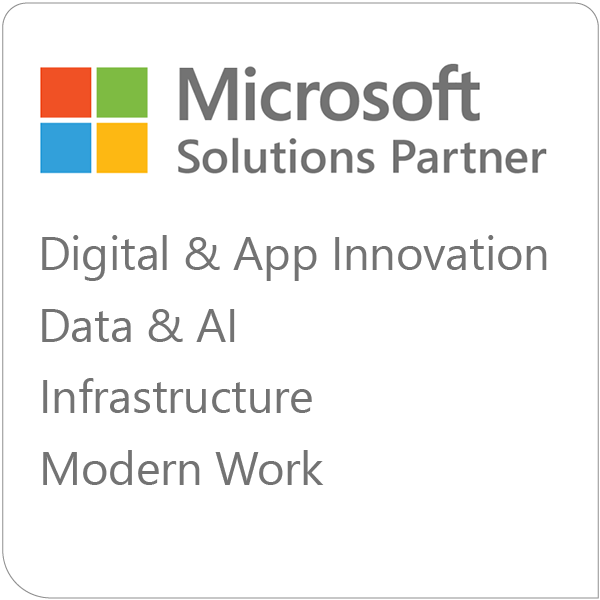Implementing security procedures for any organization involves more than just tools, it starts with understanding what needs to be protected, why it matters, and how best to reduce risk. While you’ll never eliminate every risk entirely, good governance helps you put strong, thoughtful controls in place.
One of the most effective ways to build those controls is through data governance.
In this blog post, we’ll walk through what data governance is, why it matters, and how to get started using Microsoft Purview within the Azure ecosystem.
Prerequisites
To follow along with this post, you’ll need:
A Microsoft Azure account. If you don’t already have one, you can sign up for a free trial here.
What Is Data Governance
Data governance refers to the set of policies, processes, and standards that help organizations manage and protect their data effectively.
Its primary goals are:
-
Accuracy
-
Privacy
-
Compliance
What that looks like in practice varies depending on your industry and location. For example, organizations with customers in the European Union must comply with General Data Protection Regulation (GDPR), which governs the handling of personal data. And even U.S.-based companies need to comply if they serve EU residents.
If you’re not operating in the EU or dealing with EU-based customers, you may not need GDPR, but that doesn’t mean you can ignore privacy and compliance altogether. Different industries have different requirements, and strong governance ensures your organization can meet them without scrambling.
That’s where a solid data governance framework can help. It makes implementing compliance requirements not only easier, but more consistent.
What Is Microsoft Purview
Microsoft Purview brings together various compliance tools from across Microsoft platforms, including Azure and Microsoft 365, into one unified portal.
You may have seen compliance settings scattered across tools like Microsoft Defender, Azure Policy, and the Microsoft 365 Compliance Center. Purview consolidates those experiences into a single, centralized interface.
Why create a new portal? The reason isn’t technical, it’s practical. Microsoft recognized that having multiple compliance tools spread out across services made it difficult for security and compliance teams to get a full picture. Purview was designed to solve that by offering a single place to manage data governance workflows.
In short, Microsoft Purview allows your organization to implement and manage governance policies across both Azure services and Microsoft 365 environments, tailored to the compliance requirements your business needs to follow.
Deploying Microsoft Purview
Now that we’ve covered the "what" and the "why," let’s walk through the "how."
To get started, log in to the Azure portal and search for “Purview.” You’ll see a service called Microsoft Purview accounts.

Click + Create Microsoft Purview account to begin.

You’ll be prompted to provide basic setup information, including:
-
Your Azure subscription
-
The resource group for your Purview account
-
The region
-
A name for your account

Networking Options
Within the Networking tab, you’ll choose how your Purview account connects:
-
All networks (public access)
-
Private endpoint (internal-only access)

This setting controls how you’ll securely access Purview, either via a public-facing URL or over a VPN/private network.
Once you’ve completed the form, click Create to deploy your Purview account.

After deployment, you can access the portal at: https://web.purview.azure.com
Configuring Integration Runtimes
With your Purview account created, you can begin connecting data sources and applying governance policies.
One of the first steps is setting up secure connections via Managed private endpoints.

In the Purview portal, navigate to the Managed private endpoints tab and create a new private endpoint to the Azure service you want to govern, like an Azure SQL database or storage account.

This ensures your data stays on a private, internal network, without public exposure.
After creating the endpoint, you’ll need to approve the connection:
-
Go to Azure Purview > Settings > Networking
-
Look under Ingestion private endpoint connections
-
Click the blue Approve button next to the pending connection
Once approved, your data source is securely connected and ready for governance workflows inside the Purview portal.
Closing Thoughts
Data governance is no longer optional. Whether you're in healthcare, finance, government, or any industry handling sensitive data, you need clear policies and tools in place to secure how data is accessed, stored, and used.
Microsoft Purview makes that process more manageable by bringing your governance and compliance tools into a centralized, cloud-native platform.
At Emergent Software, we help teams design and implement secure, scalable data governance strategies using Microsoft Purview and the full Azure toolset. Whether you’re starting from scratch or optimizing an existing solution, we’re here to help you reduce risk, stay compliant, and build a foundation for long-term security.
FAQ
What is data governance, and why is it important?
Data governance is a structured approach to managing your organization’s data, ensuring it's accurate, secure, and handled in compliance with internal policies and external regulations. It involves defining who can access data, how that data is classified, and what safeguards are in place to protect it.
While it’s often associated with compliance, effective data governance goes beyond regulatory checklists. It helps organizations reduce risk, improve data quality, and build trust with customers and partners. With growing privacy expectations and security threats, data governance is no longer optional, it’s foundational to any modern data strategy.
Who needs data governance? Does it apply to small organizations too?
Yes, data governance applies to organizations of all sizes. Whether you’re a large enterprise with global compliance requirements or a small business managing customer data, governance helps ensure your data is being used appropriately and securely.
Smaller organizations may not have the same compliance burdens as heavily regulated industries, but that doesn’t mean they’re immune to data breaches or misuse. In fact, having a governance framework early on can prevent costly missteps later as your data grows in volume and complexity.
How does Microsoft Purview support data governance efforts?
Microsoft Purview is a comprehensive data governance solution that helps organizations manage compliance, classify data, and implement access policies, all from a centralized platform. It pulls together governance tools from across Microsoft’s cloud ecosystem (Azure, Microsoft 365, Defender, and more) into a single, unified experience.
With Purview, teams can scan and catalog data assets, apply sensitivity labels, enforce role-based access controls, and monitor compliance against specific regulations like GDPR or HIPAA. It’s designed to make governance more scalable and less fragmented, especially for organizations already working within the Microsoft stack.
What’s the difference between Microsoft Purview and Azure Policy or Microsoft Defender?
Azure Policy, Microsoft Defender for Cloud, and Microsoft 365 compliance features all offer important pieces of the governance puzzle, but they operate independently. Microsoft Purview brings these capabilities together into a single interface, offering a clearer and more cohesive view of your compliance posture.
For example, Azure Policy helps enforce infrastructure rules, while Microsoft Defender focuses on security alerts and threat protection. Purview, on the other hand, focuses on data governance specifically, things like data discovery, classification, lineage tracking, and access policies, across both Azure and Microsoft 365 environments.
Do I need technical expertise to use Microsoft Purview?
While some setup tasks may require support from your cloud or security teams, Purview is built with accessibility in mind. Many of the tools within Purview, such as data scanning, classification, and labeling, offer intuitive, no-code configuration options. Compliance officers, data stewards, and IT admins can all collaborate within the platform without needing deep technical knowledge of Azure services.
That said, integrating Purview with your broader cloud environment and security policies is where a partner like Emergent Software can help. We ensure your setup is both technically sound and aligned with your business goals.
Can Microsoft Purview help with GDPR, HIPAA, or other compliance standards?
Yes. Microsoft Purview is designed to support a wide range of regulatory and compliance frameworks, including:
-
GDPR (General Data Protection Regulation)
-
HIPAA (Health Insurance Portability and Accountability Act)
-
SOX (Sarbanes–Oxley Act)
-
CCPA (California Consumer Privacy Act)
-
ISO 27001 and others
It allows you to classify sensitive data, monitor usage, and enforce access controls that align with the policies required under these frameworks. In many cases, Purview also provides built-in templates and recommendations to get started faster.
How does Microsoft Purview connect to data sources securely?
Purview allows you to connect to your data sources through managed private endpoints, which offer a secure, non-public network path between your services and the Purview portal. This ensures that sensitive data never traverses the public internet and remains protected behind your network’s firewalls and access controls.
Setting up these private endpoints is part of the initial configuration process in Azure, and once approved, they enable secure scanning and governance across your connected resources.
Is Microsoft Purview only for cloud-based data, or can it work with on-premises systems too?
Microsoft Purview is primarily designed for cloud environments, but it does offer hybrid capabilities. Using self-hosted integration runtimes, organizations can scan and govern data stored in on-premises systems like SQL Server, Oracle databases, and file shares.
This means you can use Purview to govern both your cloud and on-premises data estates in a consistent way, especially valuable for organizations transitioning to the cloud or managing hybrid infrastructure.
How can Emergent Software help with data governance and Microsoft Purview?
At Emergent Software, we help organizations implement cloud-native governance strategies that are scalable, secure, and tailored to their unique needs. Our team can guide you through:
-
Planning a governance strategy that aligns with compliance goals
-
Configuring Microsoft Purview in Azure
-
Integrating Purview with your existing data sources and access policies
-
Training internal teams to maintain and scale governance processes over time
We understand that every organization’s governance needs are different. Whether you’re building from the ground up or optimizing an existing solution, we’ll help you create a system that’s not just compliant, but truly secure and efficient.





